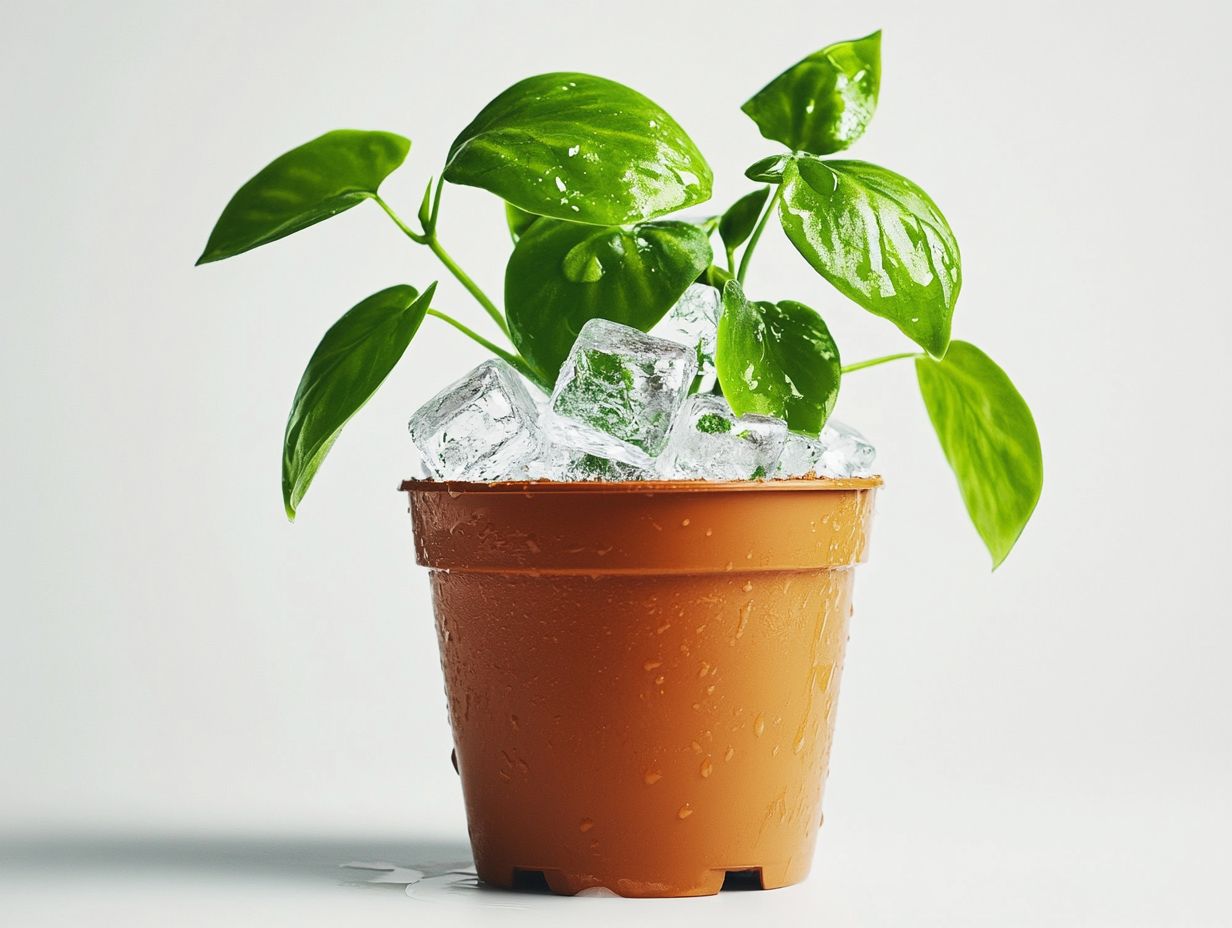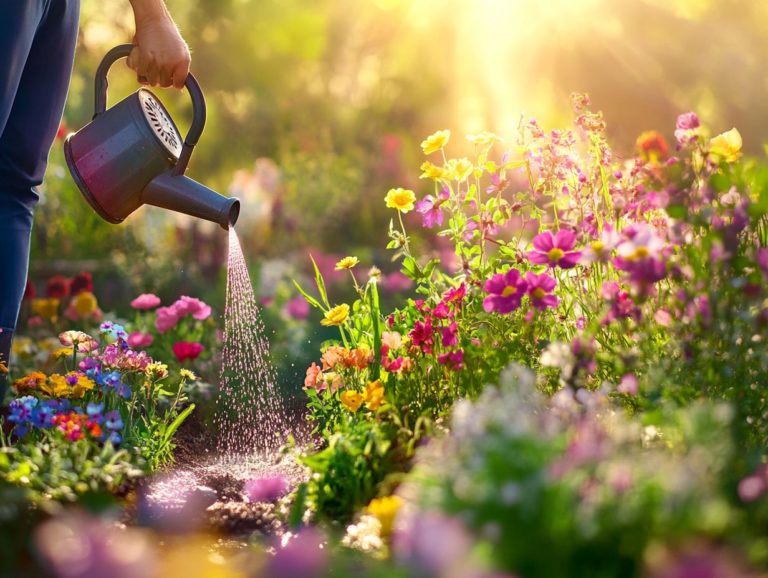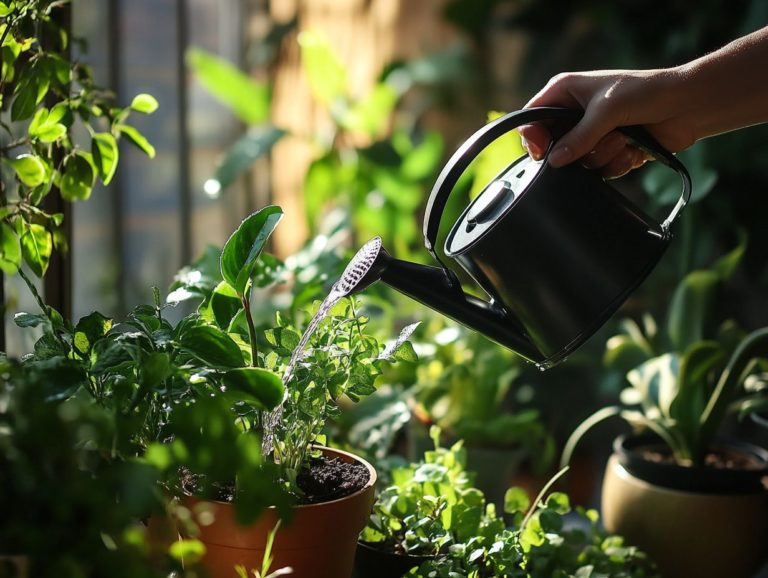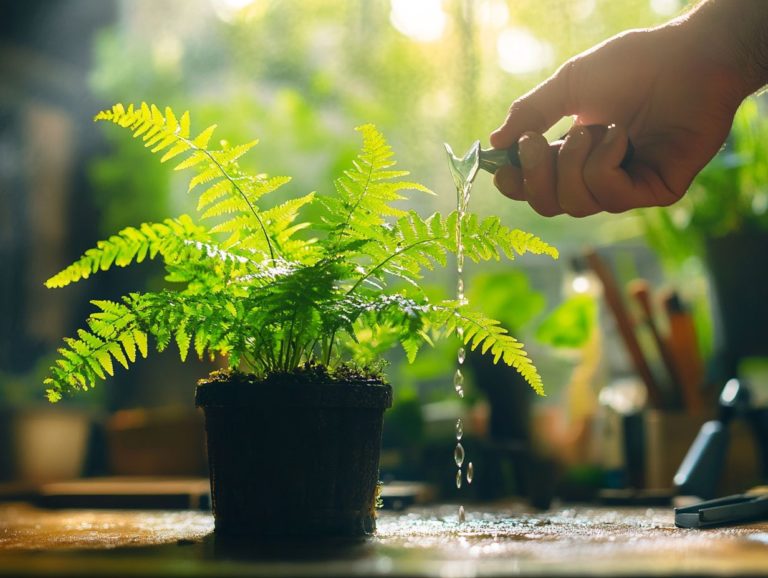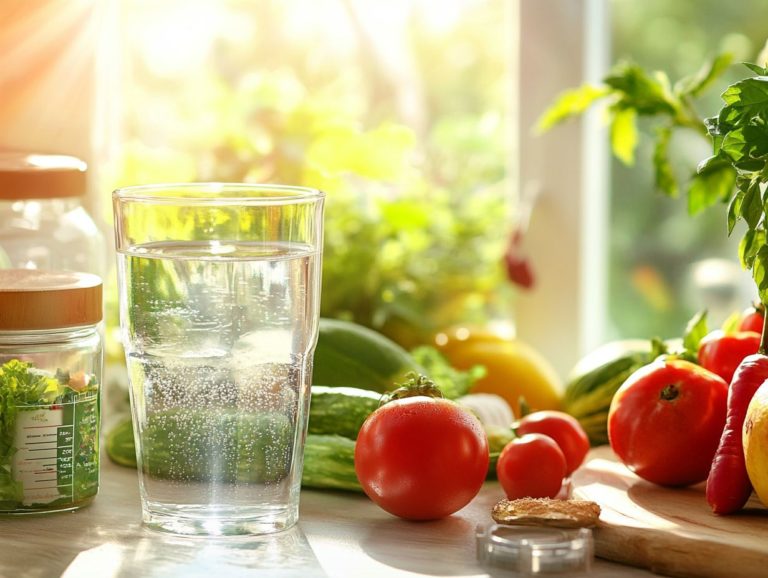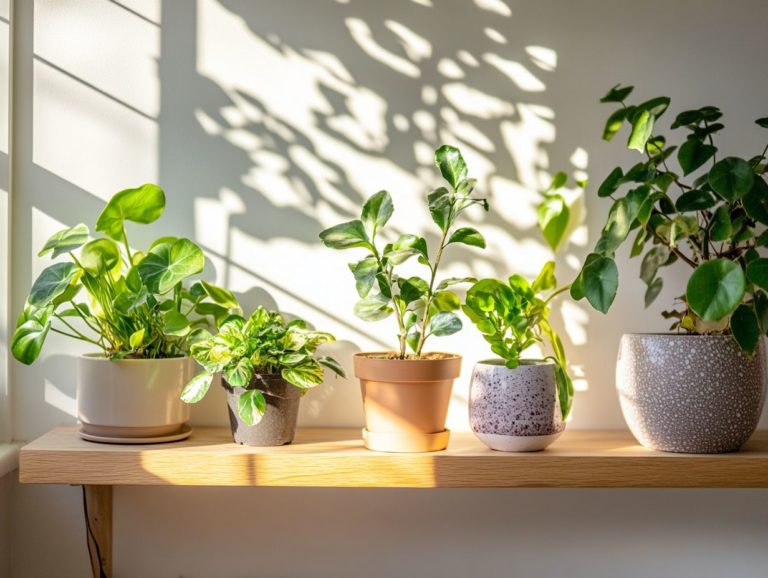How to Use Ice Cubes for Watering Houseplants
Watering houseplants strikes a delicate balance between providing just the right amount of moisture and steering clear of overwatering. This makes it one of the most effective methods for indoor plants.
One increasingly popular technique is using ice cubes, a favorite among horticulturists and plant experts. This method not only simplifies your watering routine but also offers unique advantages for your plants, especially in cooler temperatures.
You ll explore why ice cubes are an excellent alternative for hydration, receive easy step-by-step instructions, and uncover handy gardening tips for maximizing water absorption. You will also learn about potential risks.
You will learn about other effective watering methods to ensure your plants continue to thrive, including using a watering can and more innovative strategies.
Jump in and see how a simple ice cube can transform your plant care routine!
Contents
- Key Takeaways:
- Benefits of Watering Houseplants with Ice Cubes
- How to Use Ice Cubes for Watering
- Tips for Using Ice Cubes Effectively
- Possible Problems and Considerations
- Alternative Watering Methods
- Frequently Asked Questions
- What is the best way to use ice cubes for watering houseplants, especially for orchids and other tropical plants?
- How often should I use ice cubes to water my houseplants?
- Can I use any type of ice cubes for watering houseplants?
- Will using ice cubes for watering houseplants cause root rot?
- Should I use ice cubes for all types of houseplants, including indoor plants?
- Can I use ice cubes for watering outdoor plants?
Key Takeaways:
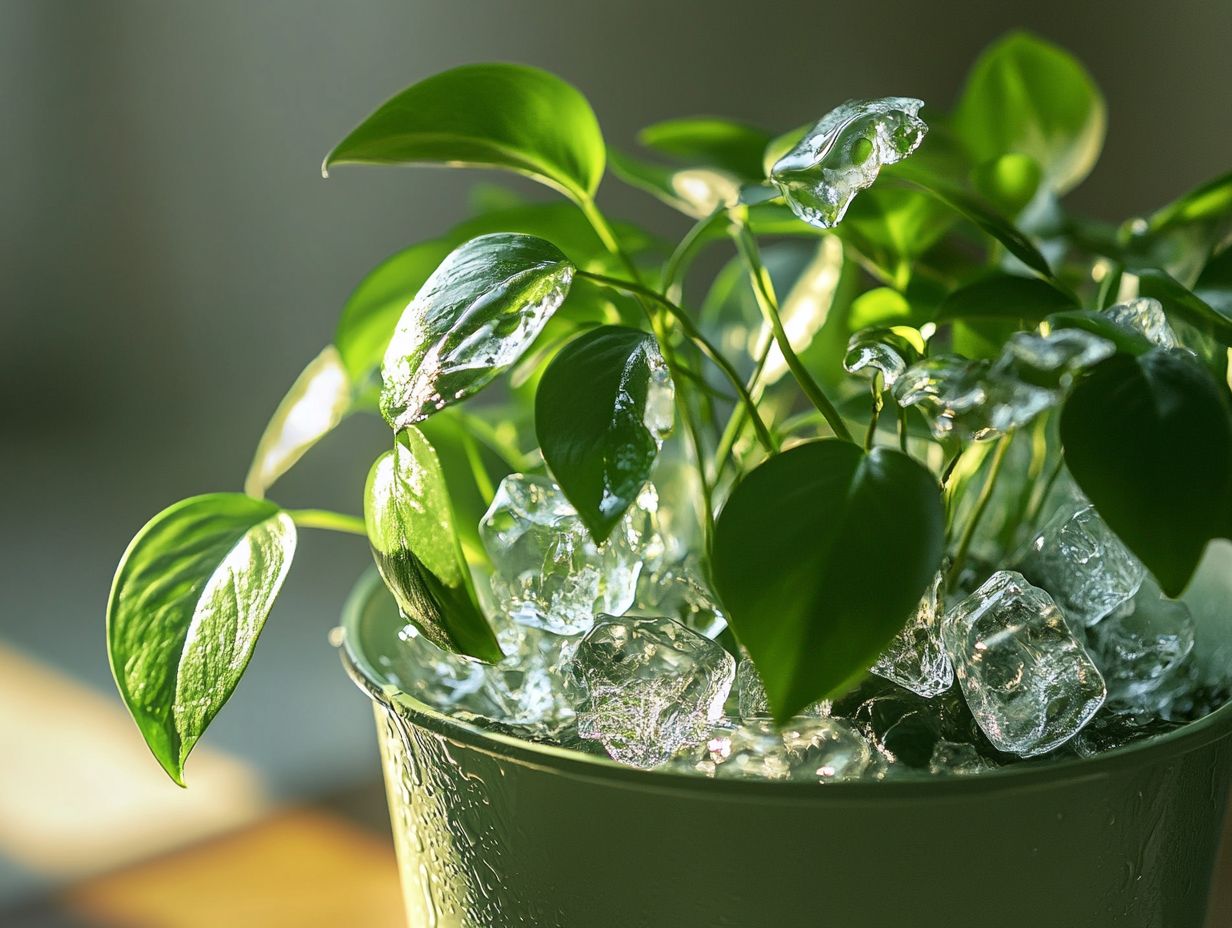
- Using ice cubes for watering houseplants offers benefits such as controlled watering and preventing overwatering. This approach is particularly useful for tropical plants.
- Follow these step-by-step instructions: Place the cubes on top of the soil or in the plant’s drainage tray.
- Maximize water absorption by using smaller ice cubes and avoiding direct contact with the plant’s leaves. Experts like Leslie F. Halleck and Tammy Huynh recommend this technique.
Benefits of Watering Houseplants with Ice Cubes
Watering houseplants with ice cubes is an innovative method tailored to the unique needs of indoor plants, especially tropical varieties that thrive in warm, humid environments.
This technique helps maintain the right amount of moisture in the soil, preventing root damage caused by overwatering while promoting overall plant health through gradual nutrient absorption.
By delivering just the right amount of water, ice cubes ensure a controlled release that caters specifically to your plants’ needs. This enhances your gardening experience and minimizes the risk of common issues, like root rot a condition where plant roots decay due to excessive water.
Why Ice Cubes are a Good Alternative
Ice cubes provide a steady, controlled release of water, which is especially beneficial for plants sensitive to cold temperatures and the dangers of overwatering.
This innovative technique ensures your plants receive just the right amount of water gradually, helping maintain optimal moisture levels in the soil. Horticulture experts note that utilizing ice cubes meets the specific needs of various houseplants, such as orchids and succulents, which thrive when moisture is applied gently.
Experienced gardeners, including Lauren David and Autumn Hilliard-Knapp, have shared their insights, emphasizing how this approach minimizes root rot and prevents the soil from becoming too saturated. They recommend using ice cubes for varieties like peace lilies and snake plants, as it promotes ideal hydration while avoiding pitfalls associated with traditional watering methods.
How to Use Ice Cubes for Watering
Utilizing ice cubes to water your indoor plants is a simple yet effective method that guarantees your plants receive just the right amount of moisture, all while reducing the risks of overwatering.
By adopting a systematic approach, you can seamlessly integrate this innovative technique into your gardening routine, ultimately boosting the health and vitality of your plants.
- Place the ice cubes directly on the soil surface.
- Alternatively, put them in the plant’s drainage tray to allow slow melting.
- Use smaller ice cubes for better water absorption.
- Avoid placing ice cubes on the leaves to prevent damage.
Try using ice cubes today and watch your houseplants thrive like never before!
Step-by-Step Instructions
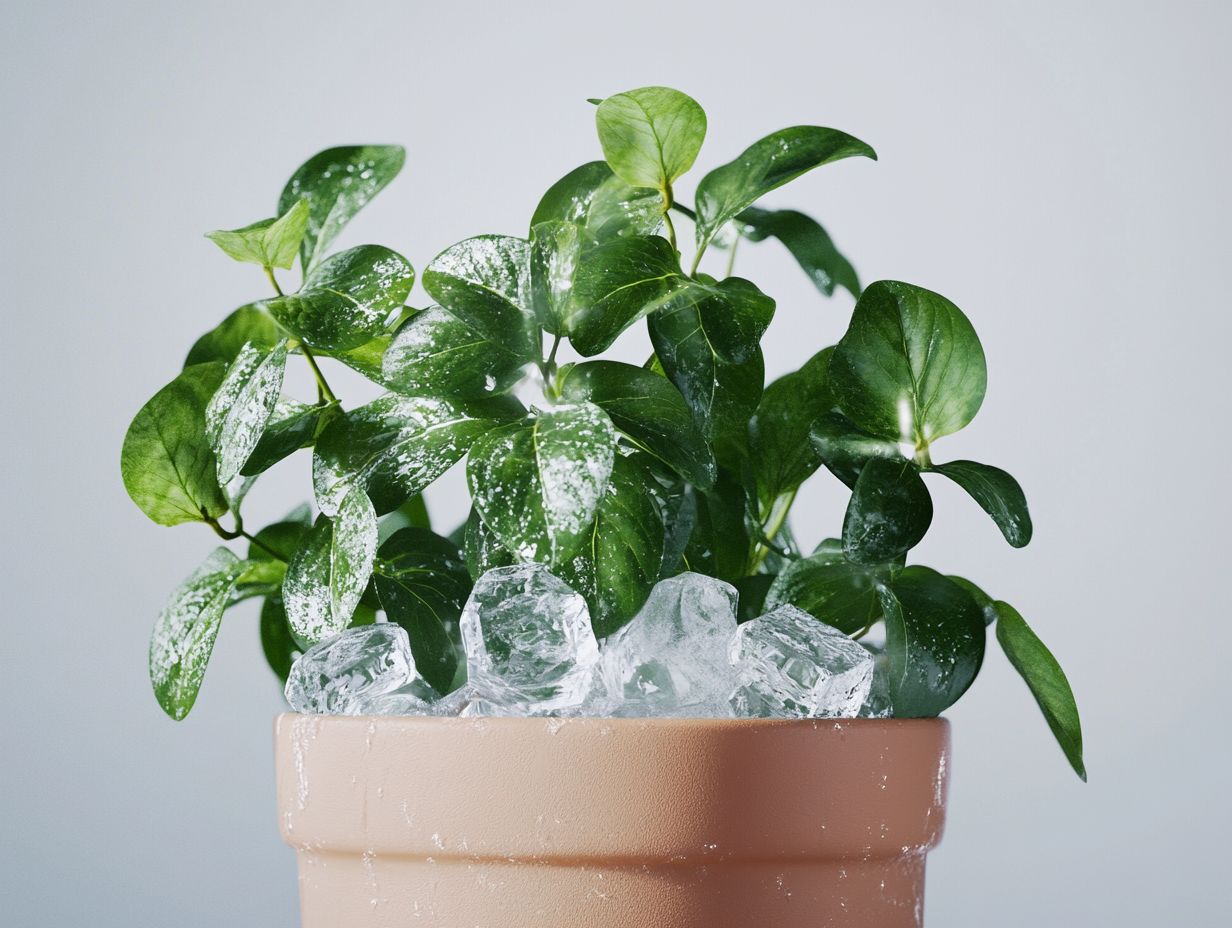
To effectively use ice cubes for watering, follow these straightforward steps to ensure your plants receive optimal moisture while considering holes at the bottom of the pot and overall health.
- Start by determining the right amount of ice cubes for your specific plant size and type. Larger specimens might need a few extra cubes to get the moisture they crave, whereas smaller ones could thrive with just a couple.
- Use a soil moisture checker to see how wet your soil is before and after watering. This handy tool checks how wet or dry your soil is, helping you avoid the pitfalls of over or under-watering, which is crucial for your plants well-being.
- Make sure your pots feature proper drainage to prevent water buildup, minimizing the risk of root rot.
Once you ve tried out this method, consider sharing your findings on platforms like Instagram. Other plant enthusiasts will appreciate your insights and experiences.
Tips for Using Ice Cubes Effectively
To maximize the effectiveness of using ice cubes for watering, embrace a few refined gardening strategies. These enhancements will improve water absorption and promote the overall health of your plants.
Maximizing Water Absorption
Maximizing water absorption with ice cubes is all about understanding the moisture needs of your plants and adjusting the number of ice cubes accordingly to enhance their health and growth.
For example, succulent varieties typically flourish with just a couple of ice cubes once a week, as they prefer drier conditions. In contrast, leafy tropical plants often benefit from a larger quantity to keep their soil moist. Watch for signs of distress, such as drooping leaves, and fine-tune your ice cube approach over time. A soil moisture checker can also offer invaluable insights into when to replenish moisture.
By monitoring these levels, you can craft a personalized watering regimen that encourages robust growth while conserving water and resources effectively.
Possible Problems and Considerations
Ice cubes can be a great way to water your plants, but be mindful of possible problems and considerations. This awareness will ensure your indoor plants thrive without facing issues like root damage or overwatering.
When Not to Use Ice Cubes
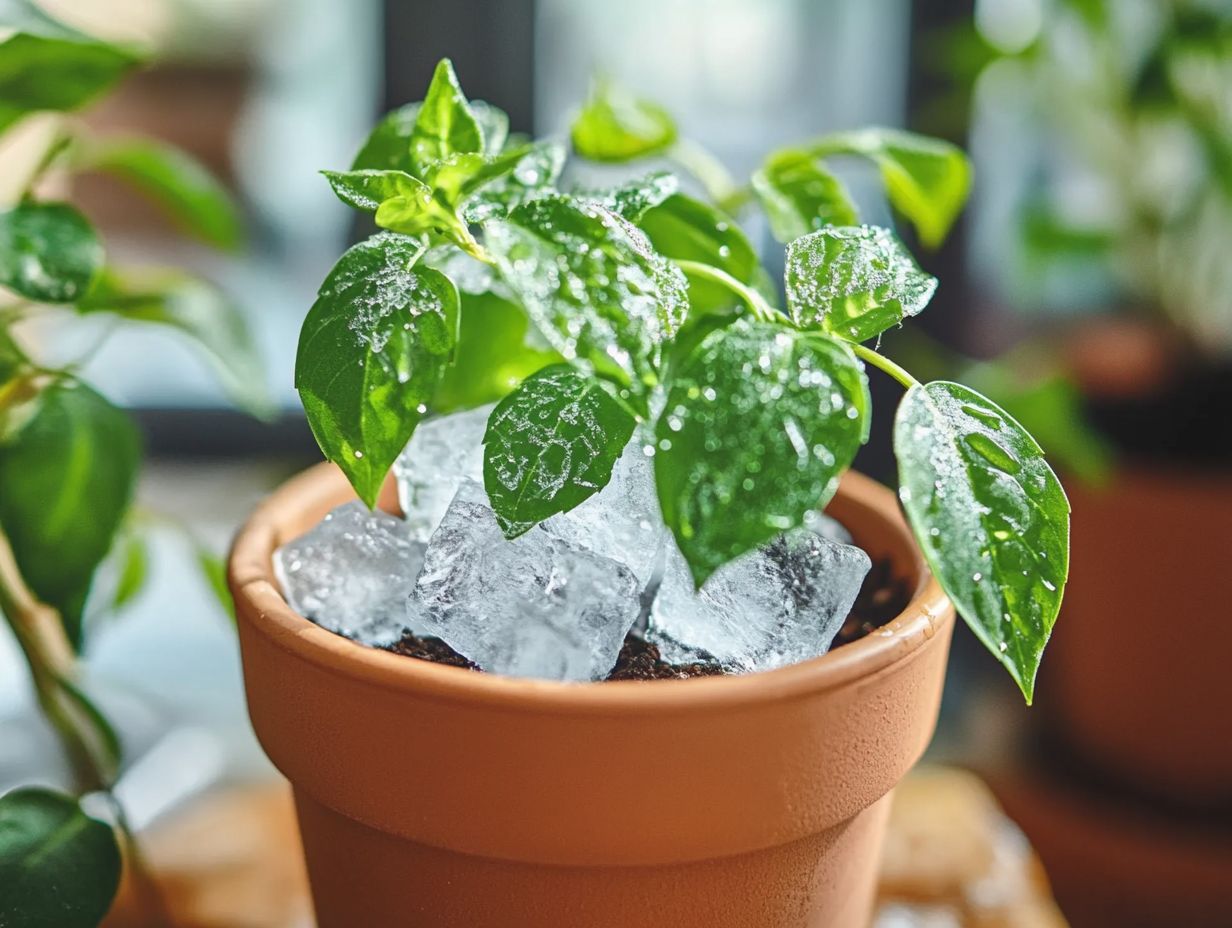
There are scenarios where using ice cubes for watering might not be the best choice, especially for tropical plants that thrive in warmer conditions and are more prone to root rot.
Take orchids, such as Phalaenopsis, and peace lilies, for example. These plants flourish in consistently warm, humid environments, and the sudden chill from melting ice cubes can stress their roots. Cold water can shock their sensitive root systems, so it s wiser to opt for room temperature water or filtered rainwater, which closely resembles their natural habitat.
Consider implementing drip irrigation, a method where water drips slowly to the roots of plants, giving them time to absorb moisture without flooding. This method encourages healthy root growth and reduces the risk of pathogen buildup that often leads to rot. Your plants will thank you for it!
Alternative Watering Methods
You have a range of alternative watering methods for your indoor plants, allowing you to complement or replace the use of ice cubes. This flexibility enables you to maintain optimal plant health with ease and confidence.
- Watering cans
- Self-watering pots
- Drip irrigation
- Soaking methods
Other Ways to Water Houseplants
Along with using ice cubes, you can explore various alternative methods to water your houseplants. Each method is tailored to their specific needs and designed to enhance nutrient absorption.
Consider self-watering systems these systems water your plants for you by providing a reservoir of water that dispenses moisture as required. This approach significantly reduces the risk of over- or under-watering.
Bottom watering allows your plants to absorb water from the base. This ensures the soil remains evenly moistened while minimizing the chance of wetting the foliage.
Utilizing a moisture meter enables you to monitor soil moisture levels with precision. This eliminates the guesswork often associated with watering and gives you confidence in your gardening choices.
While self-watering systems simplify plant care, they need your attention to avoid stagnant water and potential root rot. Bottom watering can encourage healthier root growth, but it also requires diligence to prevent leaving plants sitting in water for too long, ensuring they receive the right amount of moisture.
Investing in a moisture meter from reputable gardening suppliers can be a worthwhile expense. It generally offers reliable results and helps maintain plant health.
You re encouraged to share your experiences with these watering methods on social media. Don’t miss out on joining a vibrant community of gardening enthusiasts!
Frequently Asked Questions
These FAQs are important to help you understand how to care for your houseplants effectively.
-
What is the best way to use ice cubes for watering houseplants, especially for orchids and other tropical plants?
The best way to use ice cubes for watering houseplants is to place 2-3 ice cubes on the surface of the soil and let them melt slowly. This ensures a controlled release of moisture, like how it rains naturally, benefiting plants during their growing season.
-
How often should I use ice cubes to water my houseplants?
It is recommended to use ice cubes once a week for most houseplants, particularly those that prefer consistent moisture levels. Monitor the soil moisture and adjust the frequency of watering as needed. Temperature fluctuations can affect plant health. Plants in dry environments may require more frequent watering, while those in humid areas may need less. Understanding your plants’ unique needs is crucial.
-
Can I use any type of ice cubes for watering houseplants?
Yes, you can use any type of ice cubes for watering houseplants. However, avoid using ice cubes made with mineral or flavored water, as these can harm the plants. Plain, filtered water is the best option.
-
Will using ice cubes for watering houseplants cause root rot?
No, using ice cubes for watering houseplants will not cause root rot. In fact, it can help prevent overwatering by providing a slow and controlled release of water. Just be sure not to use too many ice cubes at once and to monitor the soil moisture level.
-
Should I use ice cubes for all types of houseplants, including indoor plants?
Ice cubes can be used for most types of houseplants, but it may not be suitable for all. Research the specific watering needs of your plants before using ice cubes, as some may prefer other methods like bottom watering or misting.
-
Can I use ice cubes for watering outdoor plants?
It is not recommended to use ice cubes for outdoor plants. They are exposed to natural rainfall and have deeper root systems that can reach water from the ground. Ice cubes may not provide enough water and could harm them in extreme temperatures.
We would love to hear your thoughts! Share your experiences in the comments below and help foster a community of green thumbs!

